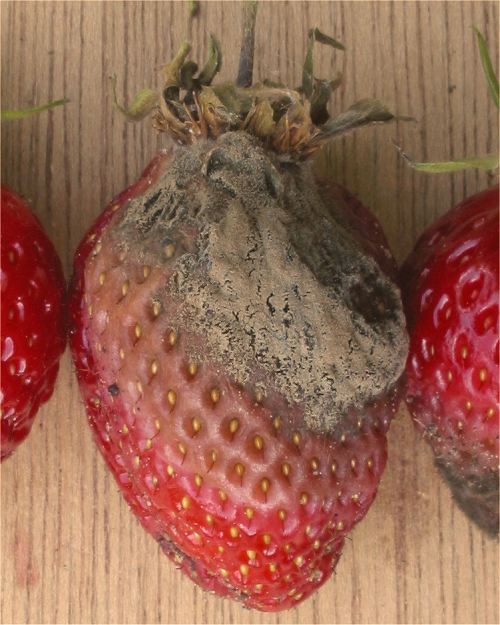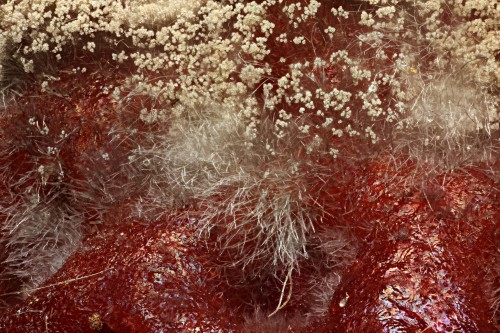by Piter Kehoma Boll
Today’s Friday Fellow will show you how beauty is only a matter of perspective. Being an ascomycete fungus, it is commonly known as gray mold and is usually found growing on decaying vegetables, especially fruits such as the strawberry in the photo below:

Gray mold growing on a strawberry. Most people would not see it as a beautiful image. Photo by Wikimedia user Rasbak.*
The gray mold has a controversial biological nomenclature, as many other fungi. The most common name is Botrytis cinerea used for its asexual stage (anamorph), which is the most common. Its sexual stage (teleomorph) is known as Botryotina fuckeliana. I guess this issue, which was common in naming fungi with rare or unknown occurrences of sexual stage, has already been settled, but as I’m not a taxonomist of fungus, I cannot speak much on the subject.
More than only having a controversial name, this fungus has also a controversial interaction with humans. It is a notable pest in wine grapes and may lead to two different infections on them. One of those is called “grey rot” and happens under wet conditions, leading to the loss of the grapes. The other is called “noble rot” and is a beneficial form of the infection that happens when the wet condition is followed by a dry one and produce a fine and sweet vine due to the concentration of sugars in the grape.
Out of the vine world, however, the gray mold is not something that you want growing on your crops. As as it attacks more than 200 species, many of them being important food crops, there is a big interest in developing strategies to reduce the damage it causes. And these strategies include the use of pesticides, plant essential oils or even other organisms that may parasitize the gray mold.
But one cannot deny that if you look closer, even the gray mold is beautiful:

A beautiful tiny forest of gray mold on a strawberry. Photo by Macroscopic Solutions.**
– – –
Wikipedia. Botrytis cinerea. Available at <https://en.wikipedia.org/wiki/Botrytis_cinerea>. Access on June 2, 2017.
WILLIAMSON, B., TUDZYNSKI, B., TUDZYNSKI, P., & VAN KAN, J. (2007). Botrytis cinerea: the cause of grey mould disease Molecular Plant Pathology, 8 (5), 561-580 DOI: 10.1111/j.1364-3703.2007.00417.x
– – –
*
This work is licensed under a Creative Commons Attribution-ShareAlike 3.0 Unported License.
**
This work is licensed under a Creative Commons Attribution-NonCommerical 2.0 Generic License.
